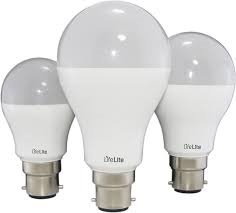 The Internet was a curiosity 25 years ago. It led to connecting our computers. Today the ability to connect computers has resulted in electronic, entertainment and communication devices that were unimaginable.
The Internet was a curiosity 25 years ago. It led to connecting our computers. Today the ability to connect computers has resulted in electronic, entertainment and communication devices that were unimaginable.
The new challenge is to better integrate all the devices that do or can combine to better serve us.
This new future could reside in the light socket.
LEDs are a way to improve lighting and reduce energy consumption. They are also poised to change our lifestyles in more dramatic ways.
Light bulbs were designed to create light. They also give off considerable heat which is an undesired by-product and limited how they could be used.
LEDs do not generate heat. This allows them to be combined with microprocessors and sensors. Our wireless networks can integrate with these microprocessors and sensors to create new ways to integrate our homes.
The current challenge is to use LED technology to connect, or network, light sockets. This intelligent lighting may be the solution to connecting electric devices throughout the home.
Sensors in lights can provide data to determine the alertness of students in school, employees or those at home. Light level could be set to automatically adjust when attention wanders as easily as we now use sensors to turn off lights when a room is not in use. Wearable devices monitoring your status may connect to light sensors with the data being used to adjust light levels.
Sensors in lights may be more effective at monitoring and controlling temperature levels throughout the home and may readjust as you enter or exit.
Sensors in supermarket light fixtures can be set to track your movement throughout the store using your mobile phone and offer coupons as you pass areas of the store.
LED technology may soon connect electronic devices from mobile phones to wearable devices such as FitBit, or items in the home such as a television or refrigerator. A television may turn on as you near it. A refrigerator may be “aware” of its contents and inform you of what to purchase through your mobile phone while shopping.
As LED technology is more heavily used and its cost – sensors, microprocessors – continue to drop, all of this becomes possible. What we need to do is learn how to act on the information that can be gathered by combining sensors in our LED lights with computing technology.
Apple, Google and Amazon are just some of the companies now looking at how residential lighting technology can be used to connect the home. Today we can purchase smart thermostats controllable over the Internet. Building management systems companies such as Siemens and Honeywell are exploring how HVAC systems and security can be integrated with lighting networks.
It is impossible to know where this technology will lead or how it will evolve. What we do know is that developing an integrated network through lighting systems is now possible. It will take years before we know what is practical.
Publication Date: March 2017
Find Vendors in these Related Categories
- Contractors - Electrical
- Contractors - General
- Contractors - Mechanical
- Design Services
- Energy Services
- Energy Services - Efficiency
- Energy Services - Electricity
- Energy Services - Gas
- Energy Services - Water
- Environmental Consulting
- Flooring
- Home Finishing
- Home Services & Automation
- Lighting Services & Suppliers
- Painting
- Renovation Services
- Restoration Services
- Window Replacement/Repair



